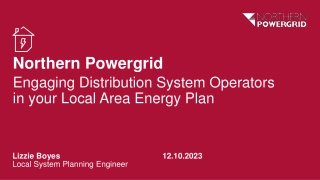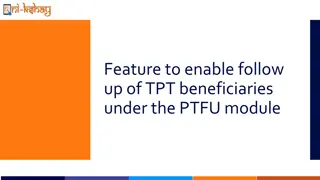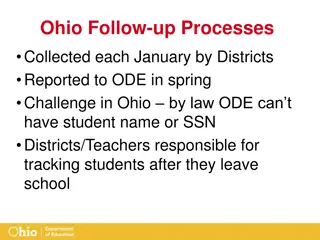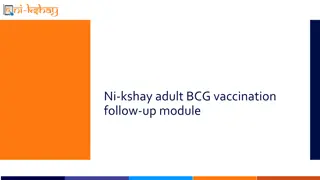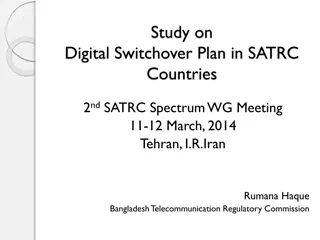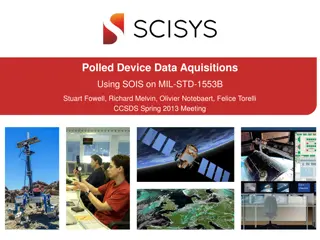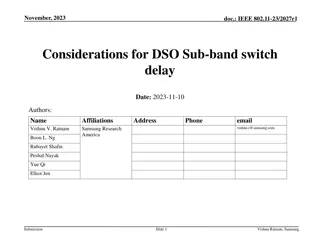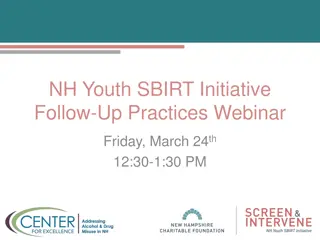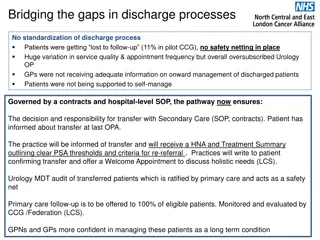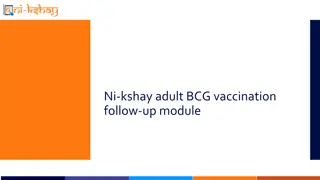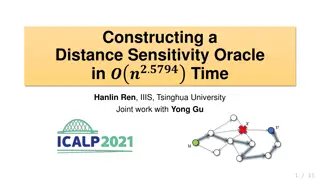
Enhancing Wi-Fi Efficiency with IEEE 802.11-24 DSO
Improve Wi-Fi efficiency by addressing underutilization issues with IEEE 802.11-24/1553r1 DSO. Learn how Multi-User OFDMA can optimize bandwidth usage for wideband and narrowband devices. Discover how DSO enables dynamic resource allocation for improved BSS bandwidth utilization in the presence of narrowband STAs.
Download Presentation

Please find below an Image/Link to download the presentation.
The content on the website is provided AS IS for your information and personal use only. It may not be sold, licensed, or shared on other websites without obtaining consent from the author. If you encounter any issues during the download, it is possible that the publisher has removed the file from their server.
You are allowed to download the files provided on this website for personal or commercial use, subject to the condition that they are used lawfully. All files are the property of their respective owners.
The content on the website is provided AS IS for your information and personal use only. It may not be sold, licensed, or shared on other websites without obtaining consent from the author.
E N D
Presentation Transcript
September 2024 doc.: IEEE 802.11-24/1553r1 DSO follow up Date: 2024-09-07 Authors: Name Gaurang Naik Affiliations Qualcomm Technologies Inc. Address Phone email gnaik@qti.qualcomm.com George Cherian Alfred Asterjadhi Abhishek Patil Duncan Ho Sherief Helwa Giovanni Chisci Sanket Kalamkar Submission Slide 1 Gaurang Naik et al., Qualcomm Technologies Inc.
September 2024 doc.: IEEE 802.11-24/1553r1 Recap Many Wi-Fi clients do not support the full bandwidth option supported by the AP While APs may support up to 320 MHz, client may support only 80 MHz, or 160 MHz When the AP has traffic for multiple STAs, if at least one client is wideband, Multi-User OFDMA can be used to schedule Resource Units (RUs) to the wideband STA in S80 or S160 If no such client exists, large portions of the operational bandwidth go underutilized, leading to poor spectral efficiency 802.11bn must address such underutilization by allowing narrowband devices to use different portions of the operational bandwidth Frequency S80 WIFI 7 Unutilized resource In-BSS Transmission to 160 MHz STA S40 In-BSS Transmission to 40 MHz STA S20 P20 subchannels Time Submission Slide 2 Gaurang Naik et al., Qualcomm Technologies Inc.
September 2024 doc.: IEEE 802.11-24/1553r1 Recap DSO allows the AP to allocate resources to a non-AP STA dynamically (i.e., on a per-TXOP basis) outside the non-AP STA s operating bandwidth Thus, it improves utilization of AP s BSS bandwidth in the presence of narrowband STAs After STA2 sends the ACK, it waits on S80 for an additional timeout interval of aSIFSTime + aSlotTime + aRxPhyStartDelay Frequency When no frame is addressed to STA2 during the timeout interval, it initiates switch back to P20 BSR Ack In-BSS Transmission to 80 MHz STA2 BSRP Trigger frame P A D D I N G STA2 BSS bandwidth (UL) (DL) (UL) non-HT dup PPDU At the end of the DSO transition delay, STA2 has parked its radio back on P20 BSR In-BSS Transmission to 80 MHz STA1 Ack STA1 (DL) (DL) (UL) (UL) P20 Time DSO Switch Back Delay STA1 parked on P20 Communicate with STAs to indicate the start of DSO frame exchange AP and STAs exchange frames on the designated subchannels in an OFDMA PPDU. More than one SIFS-separated PPDUs may be exchanged Submission Slide 3 Gaurang Naik et al., Qualcomm Technologies Inc.
September 2024 doc.: IEEE 802.11-24/1553r1 Operations during DSO The AP initiates the DSO frame exchange using an initial Control frame When the non-AP STA receives this initial Control frame, it performs the following operations: 1. It transitions to the DSO sub-band that is indicated in the initial Control frame, and 2. It transmits a response in the DSO sub-band a SIFS after the end of the initial Control frame, and 3. Becomes ready to transmit/receive frames in the DSO sub-band a SIFS after the end of the response frame. Thereafter, the non-AP STA and AP can perform frame exchanges on the DSO sub-band Submission Slide 4 Gaurang Naik et al., Qualcomm Technologies Inc.
September 2024 doc.: IEEE 802.11-24/1553r1 Switching across Primary & DSO sub-bands A DSO non-AP STA incurs delays (i.e., DSO switching delay) when it switches to the DSO subband upon receiving an ICF from its associated AP asking it to switch to the DSO subband Similarly, the DSO non-AP STA incurs delays (i.e., DSO Switch Back delay) when it switches to the primary subband at the end of the DSO frame exchange sequence TGbn should allow the non-AP STA to signal the DSO Switching delay and DSO Switch Back delay to the associated AP when it enables DSO The AP must provide padding in the initial Control frame sufficient for the non-AP STA to switch to the DSO sub-band The initial Control frame can include an intermediate FCS to facilitate the STA s transition to the DSO sub-band Submission Slide 5 Gaurang Naik et al., Qualcomm Technologies Inc.
September 2024 doc.: IEEE 802.11-24/1553r1 Error Sequence It is possible that the non-AP STA(s) that are assigned resources in the primary sub-band does not respond to the ICF If the AP continues its transmission only on the DSO sub- band, it loses medium synchronization on the primary sub- band, specifically on primary 20 Moreover, legacy STAs may try to reach the AP on primary 20 and the AP will be unable to receive such frames We propose that if the allocated STA on the primary20 channel does not respond, the AP does one of the following: Terminates the frame exchange with all STAs, or Ensures that the primary20 channel is occupied in the subsequent frames exchanges (as shown in the adjoining figure) DSO sub- band BSR BA (STA2) (STA2) BSRP Trigger frame + Padding DL PPDU A-1 (STA1 pri80; (STA2 + STA3) STA2 S80) sub-band Primary BA (STA3) P20 AP sends a PPDU addressed to STA2 + another STA3 which was not included in the DSO ICF STA1 does not respond to BSRP Submission Slide 6 Gaurang Naik et al., Qualcomm Technologies Inc.
September 2024 doc.: IEEE 802.11-24/1553r1 Conclusions In this presentation, we next level details on Dynamic Subband Operation: Operations during DSO frame exchanges Signaling considerations How to handle error sequence during DSO frame exchange Submission Slide 7 Gaurang Naik et al., Qualcomm Technologies Inc.
September 2024 doc.: IEEE 802.11-24/1553r1 Straw Polls 1. Do you support that in the DSO ICF, the AP indicates to a DSO STA to switch to a DSO sub-band Upon reception of the DSO ICF, the DSO STA shall transition to the DSO sub-band, transmit the response in the DSO sub-band a SIFS after the end of the DSO ICF And receive frames or be triggered to transmit frames, subject to its spatial stream capabilities and operation mode, in the DSO sub-band (derived from the DSO ICF), a SIFS after the end of the response frame The baseline rules for CS required are followed. Submission Slide 8 Gaurang Naik et al., Qualcomm Technologies Inc.
September 2024 doc.: IEEE 802.11-24/1553r1 Straw Polls 2. Do you agree that if no non-AP STA that is assigned resources in the primary 20 MHz responds to the initial Control frame and there is at least one response on other channels, the AP shall do one of the following: Terminate the frame exchange sequence with all non-AP STAs, or Continue the frame exchange sequence by ensuring that the primary 20 MHz is occupied Whether there are other options is TBD Submission Slide 9 Gaurang Naik et al., Qualcomm Technologies Inc.

